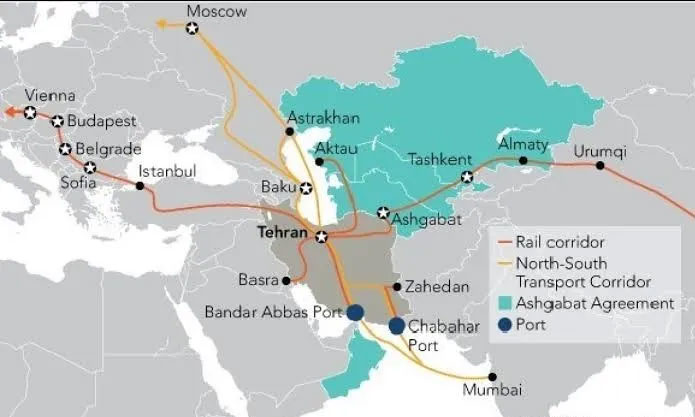Azerbaijan And The International North-South Transport Corridor
Transport routes passing through Azerbaijan at the moment are becoming increasingly attractive as the country creates conditions to ensure efficient transit as soon as possible. This is especially true as Baku Port has become a transport and logistics Caspian Sea gateway between Europe and China.
Azerbaijan’s onus has been to develop modern transport infrastructure in both rail, road and maritime to save money and time and compete with the Suez canal. It is working – Azerbaijan’s cargo transit volumes in 2022 increased by more than 75% over the previous year.
However, Azerbaijan does not plan to stop there and is taking further measures to enhance and increase its transport potential, given the growing demand for alternative routes.
Currently, the International North-South Transport Corridor is a hot topic on the global agenda. This corridor runs from Russia through Azerbaijan and from Iran to India. It is a multi-modal mix of rail, road and sea transport aimed at optimizing trade between the start and end points of the route.
The North-South Corridor has a total length of 7,200 kilometers. This route links Europe, the countries of the Persian Gulf and the Indian Ocean through the Suez Canal. The Western and Eastern routes of the corridor pass through Iran: the Western route provides transportation through Iran by road through Rasht checkpoint, and the Eastern one – by rail. The final destination in Iran is the port of Bandar Abbas, from which goods can be delivered to India by sea. The Western route also passes through Azerbaijan, while the Eastern one – through Kazakhstan and Turkmenistan. In addition, direct sea transportation from Russia via the Caspian Sea to Iran is possible.

By 2030, the volume of cargo along the North-South Corridor is expected to almost double, from the current 17 million to 32 million tons per year.
As we discussed yesterday, officials from Russia, Kazakhstan and Turkmenistan announced that a joint venture will be created between these countries. The purpose of this JV is to create a single logistics operator on the Eastern Route of the North-South Corridor.
The Eastern Route passes through the border between Iran and Turkmenistan – via Ak-Yayla or Sarakhs checkpoints. Hereby, the cargo is moved by rail to Kazakhstan, and then to Russia. The shortest option runs through the Ak-Yayla checkpoint.
The Ak-Yayla checkpoint, is considered to be shorter, yet is still over 2,500 kilometers long. Thus, the route turns out to be less attractive, given that the ultimate goal is to reduce costs and transit time.
When the Russia, Kazakhstan and Turkmenistan JV is created, it will contribute to reducing transportation costs and faster movement along the corridor. However, to establish such a structure will take some time, as there are bureaucratic barriers and red tape that will need to be overcome.
At the same time, the 1,450-kilometers long Western Route is, perhaps, the most widely exploited and well-developed one. Statistics show that, from January 1 through March 28, 2023, the volume of transit of goods along the Western route totaled 2.15 million tons, a huge increase of 84.37% year-on-year (1.16 million tons transported in 2022). Only one obstacle delays the operation of the route at full capacity – 164-kilometers long Rasht-Astara railway line. However, the agreement between Iran and Russia on the construction of this line is expected to be signed by May 21, 2023. When this section is completed, the Western Route of the North-South Corridor will become fully operational. That can be expected in early-mid 2024.
Azerbaijan, being on the crossroads between East and West, has become an attractive destination. Besides the North-South Corridor, Azerbaijan has also boosted the transitional capacities of the Trans-Caspian International Transport Route, also known as the Middle Corridor. Essentially, Azerbaijan has provided incomparable conditions for the fastest, cheapest and most convenient transportation of goods. Due to enormous effort put in the modernization of transport and logistics infrastructure, the country will maintain its key transport role despite regional or global geopolitical upheavals.
Related Reading





